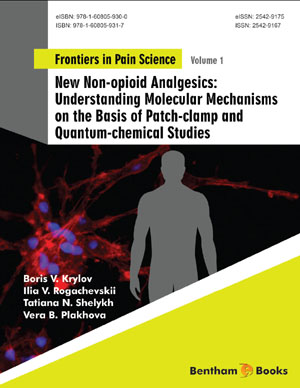Abstract
Derivatives of gamma-pyrone show their remarkable ability to trigger the novel mechanism of NaV1.8 channels modulation described in Chapter 1. Unlike morphine, which activates both opioid and opioid-like receptors, comenic acid specifically switches on the latter mechanism involving Na+,K+-ATPase as the signal transducer. It is extremely important that not any gamma-pyrone derivative can decrease the voltage sensitivity of NaV1.8 channels, though all molecules studied herein share a rather similar chemical structure. A very productive approach which makes it possible to elucidate the peculiarities of ligand-receptor binding on the molecular level is combined application of quantum-chemical calculations and the patch-clamp method. Below we present our findings that explain a totally unevident result of highly selective binding of gamma-pyrone derivatives to the opioid-like receptor. Understanding of this mechanism opens up opportunities for creation of a novel class of analgesics.
Keywords: Ca2+ chelate complex, Gamma-pyrone derivatives, Limiting slope procedure, NaV1.8 channels, Nociception, Opioid-like receptor, Patch-clamp method, Quantum-chemical calculations.






















